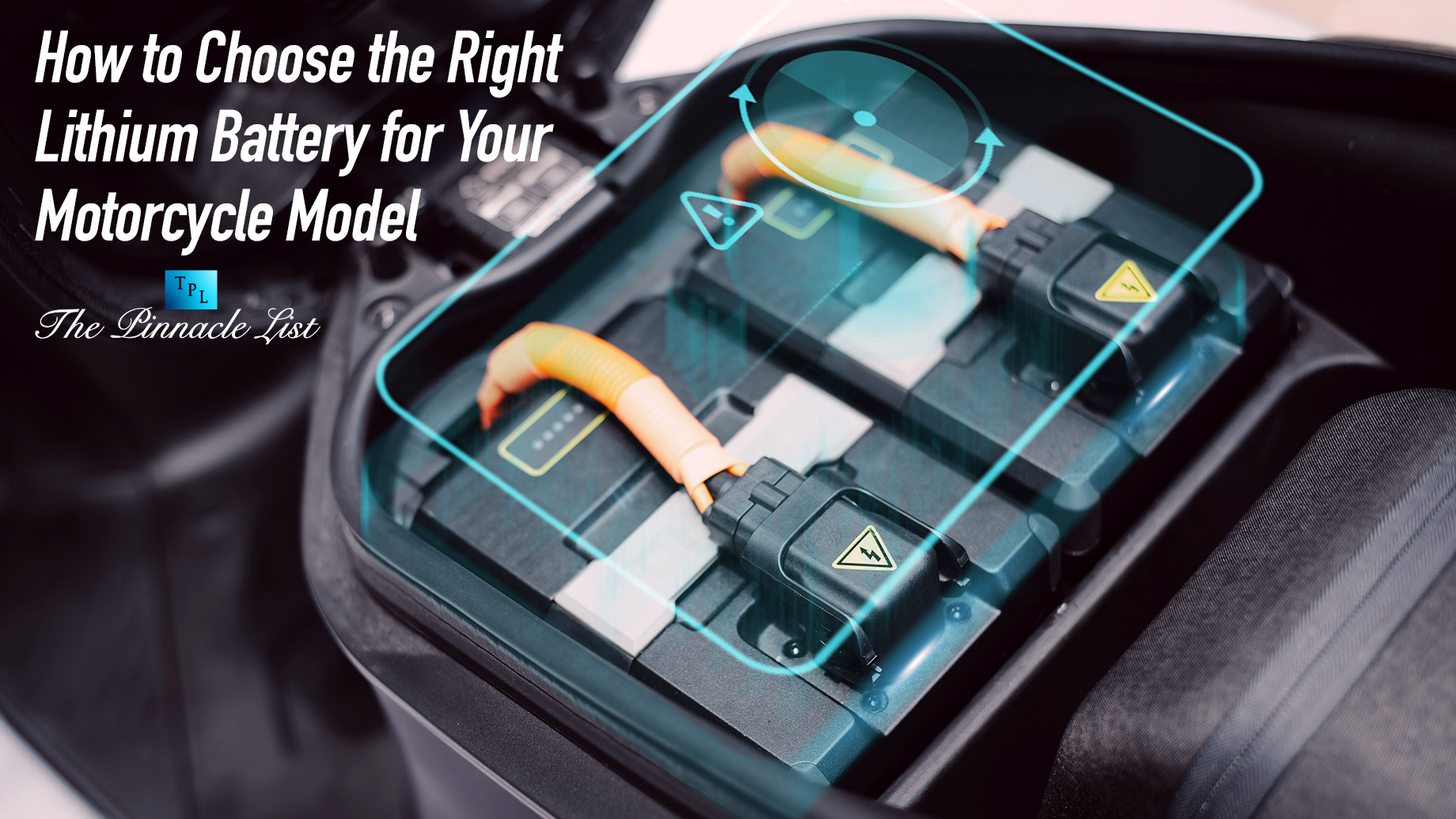
The advent of lithium batteries in the motorcycle industry has revolutionized how riders think about power, efficiency, and reliability. Lithium batteries are lighter and longer-lasting than traditional lead-acid batteries and deliver better performance. However, choosing the best lithium motorcycle batteries requires carefully evaluating several factors to ensure compatibility and optimal functionality.
Why Choose a Lithium Battery for Your Motorcycle?
Lithium batteries offer several benefits over their lead-acid counterparts:
- Weight Savings: They are significantly lighter, often up to 70% less in weight, which enhances overall bike performance.
- Longevity: Lithium batteries have a lifespan 2-4 times longer than traditional batteries.
- Improved Performance: They deliver consistent power output and quicker startups.
- Low Maintenance: They are generally maintenance-free and have lower self-discharge rates.
These benefits make them an ideal choice for riders seeking performance and reliability. However, not all lithium batteries are created equal, and choosing the wrong one can lead to compatibility issues or poor performance.
Factors to Consider When Choosing a Lithium Battery
Battery Compatibility with Your Motorcycle Model
The first step in selecting a lithium battery is ensuring it’s compatible with your motorcycle. Check the specifications in your bike’s user manual or consult a professional to determine the required battery type, voltage, and capacity. Lithium batteries come in different sizes, configurations, and terminal types, so ensuring a proper fit is essential.
Key considerations include:
- Voltage: Most motorcycles use a 12V system, but verify your bike’s requirement.
- Capacity (Ah): Match the amp-hour rating to your motorcycle’s needs for optimal performance.
- CCA (Cold Cranking Amps): Ensure the battery provides sufficient starting power, especially for colder climates.
Size and Dimensions
Lithium batteries are often more compact than traditional lead-acid batteries, but size still matters. Ensure the battery fits snugly within your bike’s battery compartment. Overly tight fits can damage the battery casing, while loose fits may cause vibrations and potential damage.
Brand and Quality
Not all lithium batteries are created equal. Reputable brands are more likely to provide reliable products that meet or exceed industry standards. Look for manufacturers with positive reviews and proven track records in the motorcycle industry.
Top brands include:
- Shorai
- Antigravity Batteries
- Ballistic Performance Components
- Yuasa
These brands offer high-quality lithium batteries specifically designed for motorcycles.
Weight and Performance
Weight is a crucial consideration for performance motorcycles where every kilogram counts. Opting for a lightweight lithium battery can reduce overall weight and improve handling. Some high-performance lithium batteries are designed specifically for racing motorcycles, providing both lightweight and high output.
Charging System Compatibility
Lithium batteries require a compatible charging system. Ensure your motorcycle’s charging system is designed to work with lithium batteries, or it could lead to undercharging or overcharging, which shortens the battery’s lifespan. If your bike’s charging system isn’t compatible, consider installing a compatible lithium battery charger.
Built-in Safety Features
Lithium batteries are inherently safer than lead-acid batteries, but additional safety features can enhance protection:
- Battery Management System (BMS): A BMS prevents overcharging, undercharging, and overheating.
- Thermal Protection: Ensures the battery operates within safe temperature ranges.
Environmental Factors
Consider the environment in which you’ll be riding:
- Temperature: Some lithium batteries perform poorly in extremely cold conditions. Look for models specifically designed to operate in a wide temperature range.
- Vibration Resistance: Choose a battery with robust construction if you ride off-road or on rough terrains.
Installing Your Lithium Battery
Once you’ve chosen the right lithium battery, proper installation is key to maximizing its performance:
- Preparation: Disconnect the negative terminal of the existing battery first, followed by the positive terminal.
- Inspection: Clean the battery compartment and check for any signs of damage or corrosion.
- Installation: Place the lithium battery in the compartment, securely fastening it.
- Connection: Connect the positive terminal first, then the negative terminal.
- Test: Start your motorcycle to ensure the battery is functioning properly.
Maintaining Your Lithium Battery
Lithium batteries require minimal maintenance, but a few best practices can extend their lifespan:
- Use a dedicated lithium battery charger to avoid damage.
- Disconnect the battery if your motorcycle will be idle for extended periods.
- Store the battery in a cool, dry place to prevent degradation.
Conclusion
Switching to a lithium battery is smart for motorcycle enthusiasts seeking improved performance, reduced weight, and longer battery life. By considering factors like compatibility, size, brand reputation, and environmental conditions, you can find the perfect lithium battery for your motorcycle model. Proper installation and maintenance will ensure you enjoy the full benefits of this advanced technology.
Investing in the right lithium battery is more than an upgrade; it’s a step towards a more reliable and efficient riding experience. Make the switch today and feel the difference!